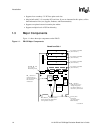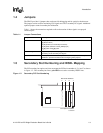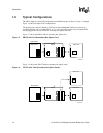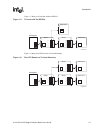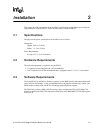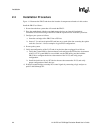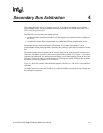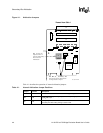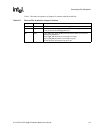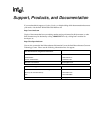
21152 PCI-to-PCI Bridge Evaluation Board
User’s Guide 4-1
Secondary Bus Arbitration
4
This chapter describes the use of jumpers to test 21152 secondary bus arbitration, an optional
programmable feature. For more detailed information about the 21152 arbiter, refer to the 21152
PCI-to-PCI Bridge Data Sheet.
The EB152 has two secondary bus arbiter systems:
• An internal arbiter implemented in the 21152 that supports four external masters in addition to
the 21152
• An optional external arbiter implemented in an AMD MACH210A programmable device
The default setting is internal arbitration. The internal 21152 arbiter implements a 2-level
programmable rotating mode algorithm. Secondary bus parking is done at the last master to use the
bus.
The internal arbiter can be disabled, and an external arbiter can be used instead for secondary bus
arbitration. The EB152 provides a socket for an optional PAL (labeled E3 in Figure 4-1) to control
secondary bus arbitration. If a different external arbiter is used where parking is done at one of the
PCI slots, a PCI device must be installed in that slot.To change the default, configure the secondary
bus arbiter system using jumpers J7, W4, and W1.
Figure 4-1 shows the location of the arbitration jumpers, and Table 4-1 and Table 4- 2 describe their
operation.
All jumper positions assume that the EB152 is positioned with the components facing forward and
the card edge facing down.



